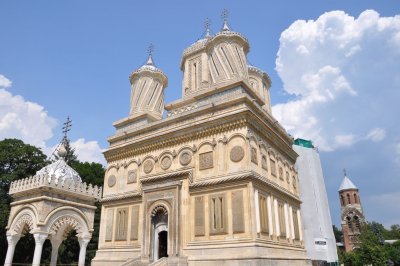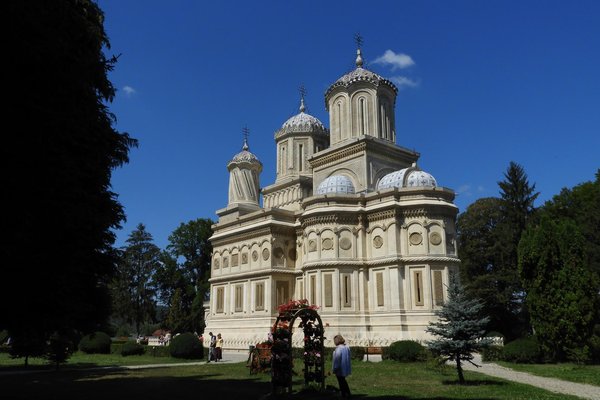Romania
Curtea de Arges Churches
The Byzantine and Post-Byzantine churches of Curtea de Arges comprise two sets of religious buildings. The 14th century princely church of Saint-Nicolas retains almost entirely its original painting of high quality. The 16th century church of the old monastery of Arges is decorated in richly carved stone.
Site Info
Official Information
- Full Name
- Eglises byzantines et post-byzantines de Curtea de Arges (ID: 545)
- Country
- Romania
- Status
-
On tentative list 1991
Site history
History of Curtea de Arges Churches
- 1991: Added to Tentative List
- Added to tentative list
- Type
- Cultural
- Criteria
Links
- UNESCO
- whc.unesco.org
All Links
UNESCO.org
- whc.unesco.org — whc.unesco.org
Community Information
- Community Category
- Religious structure: Christian
Travel Information
Recent Connections
News
No news.
Recent Visitors
Visitors of Curtea de Arges Churches
- Afshin Iranpour
- Alexander Lehmann
- Alex Marcean
- Argo
- Aspasia
- Bin
- Cezar Grozavu
- Christoph
- Dagmara
- emvcaest
- Erik Jelinek
- Evgenii
- Feldhase
- Jakob F.
- Jakubmarin
- Janina Lehmann
- Jan-Willem
- Jarek Pokrzywnicki
- Jean Lecaillon
- John Smaranda
- jonathanfr
- Lisu Marian
- Maciej Gil
- MarcoB_0
- Mihai Dascalu
- Paul Schofield
- Petri Jurescu
- Piotr Wasil
- Remigiusz
- Roman Bruehwiler
- Roman Raab
- Szucs Tamas
- Twobaconsandaboston
- WalGra
- Yevhen Ivanovych
Community Reviews
Show full reviews
I guess most WHS travellers take interest in knowing a bit about the history of the sites they visit, and you can’t visit Romania, without understanding a little bit about the former kingdoms / princedoms that make up what we now know as Romania, and the many occupations and changing borders of the regions. While Transylvania is probably the most well-known part of Romania, the southern part is Wallachia. Curtea de Argeș once was its capital, reaching its greatest importance in the 13- and 14-hundreds.
I visited Curtea de Argeș back in 2012 and was not particularly focused on sites being listed as tentative WHS. I have no memories of visiting the remains of the princely court, so we probably didn’t. But the slightly younger cathedral of the former monastery is a gracious building, with the two twisted towers (or cupolas) being among its remarkable outside features. The UNESCO website doesn’t say much more than that its architecture has had a big influence.
Legend has it that there were structural problems with the walls in the building stages. This could only be solved by making an offer by following the (absolutely normal?) tradition of placing a living woman in the structure, which in the end was the wife of the chief builder himself.
Being a TWHS since 1991 doesn’t necessarily give hope that this will become a WHS. But I did like it, as apparently do all 10 others who have voted here on the website so …
Keep reading 0 comments
